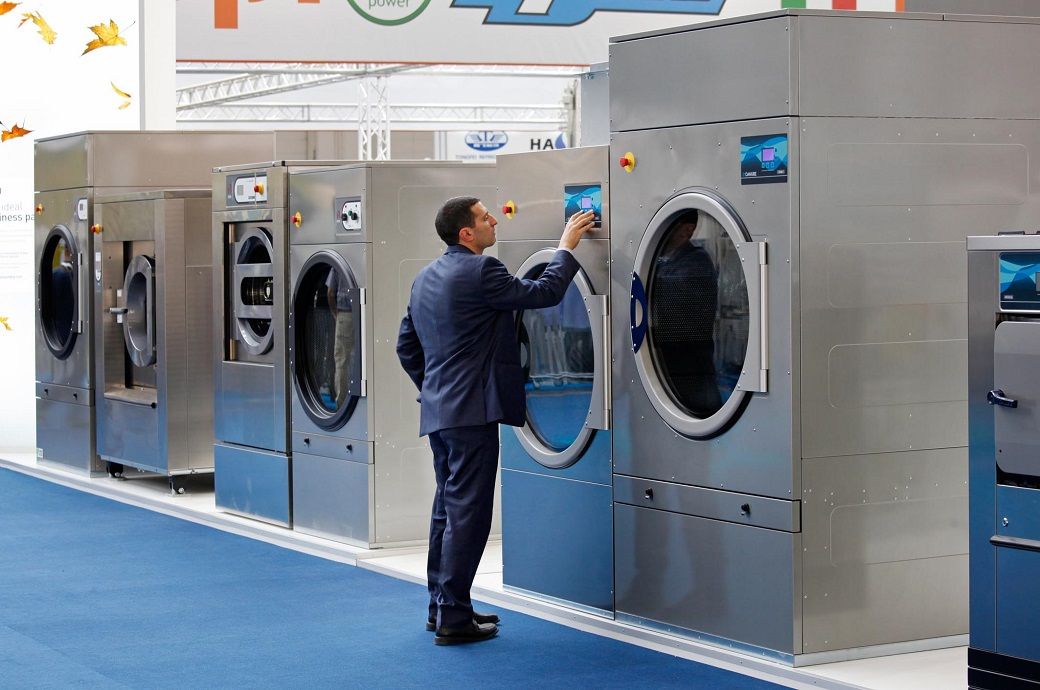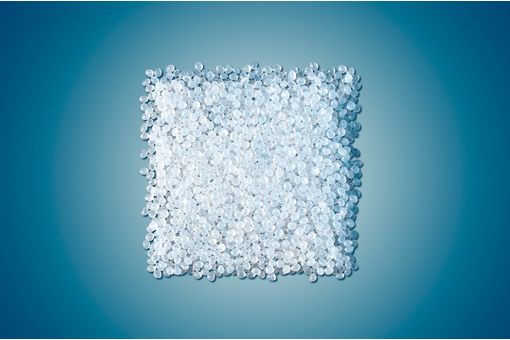Texcare Frankfurt to present developments in automated textile care

Insights
- Texcare International in Frankfurt to showcase advancements in automated textile care, featuring RFID systems, robotics, and Artificial Intelligence to address industry challenges like staff shortage.
- Innovations include RFID-enabled laundry traceability, automated soiled laundry inspection and sorting, and scanners for quality control of flat linen.
Automation is advancing apace in the textile-care sector. RFID systems, robotics and artificial intelligence are introducing greater transparency into the flow of goods, carrying out high-risk, heavy or monotonous work and improving quality control processes. In this way, these clever mechanisms are alleviating one of the most acute problems in the industry: staff shortage.
The degree of automation in the textile-care sector has already reached a high level and, in many cases, everything operates smoothly, just like a production line. Nevertheless, more tasks that are currently still carried out manually could be taken over by machines and robots in the future. The latest innovations in the field of automation will be on show at Texcare International in Frankfurt am Main from 6 to 9 November 2024.
Laundry traceability
Although there are alternatives, RFID technology is an important tool for textile-care companies when it comes to laundry management. Tags, i.e., transponders or chips embedded in textiles, contain all relevant information about each individual item. These tags are identified by readers, i.e., detection devices, and 'translated' into the next processing stage via interfaces, thus eliminating the need to manually read in a barcode. Bulk goods can in turn be localised using UHF technology, which leads to more operational transparency. Wireless systems are therefore set to become increasingly important for machine-supported, efficient laundry processing, as shown by a variety of automation developments.
Automatic soiled laundry inspection and sorting
In future, sorting dirty laundry could be one of the processes that can be carried out by machines. In the systems developed by Denmark's Inwatec company, intelligent technology separates, recognises and classifies the goods delivered: robots pick up the individual items of laundry from conveyor belts, while RFID chip readers or cameras and artificial intelligence identify and register each item, be it workwear, towels or even bed linen. Immediately afterwards, an X-ray scanner automatically detects unwanted, hidden items in the bags and removes these articles. Only approved laundry items are forwarded and sorted by the system in accordance with the designated washing or cleaning process. The system, which can operate around the clock, is reliable and fast. In hospital laundries, it also minimises contact with harmful germs and the risk of injury from sharp or pointed objects. Nevertheless, such a system still cannot work fully automatically because, on the one hand, the incoming laundry has to be loaded manually from the trolleys into the sorting system and, on the other hand, the employees must handle the rejected garments, identify valuable items and return them to the wearers if the labelling makes this possible.
Scanners monitor the quality of flat linen
The handling of dry laundry is also characterised by fewer personnel and more automated technology. Thanks to developments by several companies, the continuous scanning of textiles for holes, stains, deformations or colours has long been used for ironing laundry of identical dimensions. At this point, imperfect items are removed from the process, after which the flawless items are automatically folded and stacked.
Robots do the folding without a break
Other automated processes now include the folding and stacking of terrycloth products. Companies such as Hebetec Wäschereitechnik, Kannegiesser and Sewts are set to present corresponding solutions at Texcare 2024. Andreas Langer, Kannegiesser's marketing manager, explains the reasons behind the development of the fully automated dry laundry line: "Due to fatigue, the operator's input performance naturally fluctuates and decreases over the course of a shift. Automation prevents input from becoming a bottleneck and slowing down the laundry process. This arduous task is performed by state-of-the-art equipment. Working with advanced technology, such as robots and intelligent control systems, has another advantage: it makes it easier for a modern laundry to attract tech-savvy employees and specialists who find working with innovative and future-oriented technologies exciting and want to be part of a modern company."
The principle of a fully automatic terrycloth folding system is usually based on modern image recognition systems and sensors. These enable one or more robot arms to recognise, grip, align, identify or measure an item in a laundry trolley, feed it to the folding machine, fold it with the appropriate folding programme and then stack it. Depending on the manufacturer, these processes are carried out in accordance with specific procedures, which also influence the performance of the machine. According to Kannegiesser, this results in an hourly folding rate between 600 and 700 items, depending on the variety of items to be processed. For example, a person is still faster than a machine when folding smaller items of laundry, such as flannels.
Automatically sorted to the packing station
To date, processing automation has usually concluded with the laundry items grouped together in stacks, which are then manually sorted, picked, assigned to tours or stored. This gap between the folding machine and the packaging area can now also be closed, too, thanks to a storage and replenishing system for stacked flat linen developed by the Jensen Group. The stacks of clean laundry are placed on a storage belt and automatically fed to the staff who fulfil the orders. An additional storage system that can also be integrated into the system provides further space for the laundry stacks. They are temporarily stored there, retrieved as required and transported to the packing station using cranes and conveyor belts, where laundry staff complete the deliveries for the customers.
"As a transport system for stacked flat laundry, our system fulfils all requirements for maintaining the quality, cleanliness and hygiene of the finished goods right through to the dispatch area. The individual stacks are transported separately, which prevents unintentional displacement of the linen and manual repositioning. Thus, automated processing from the storage conveyor ensures a consistent level of quality, which enables user-friendly packaging and leads to customer-oriented delivery of laundry stacks. Simultaneously, this cuts down on the number of employees required in the final stage of a textile hire company, which can ease the pressure on the usually tight staffing levels in the companies," explains Jensen Group marketing manager Nicolas Gostony.
Human skills remain in demand
Thanks to the rapid development of sensors, artificial intelligence and robotics, textile care 4.0 is taking on ever more tangible forms. These clever systems give companies the chance to automate similar tasks and thereby improve their performance, laundry quality and hygiene. Shortages of skilled and unskilled labour can be better covered, while employees benefit from a higher quality of work and new opportunities for development. Nevertheless, despite the rapid advances in automation, the textile service industry is inconceivable without human beings. Their cognitive skills are required, in particular, for coding, individualisation (applying name badges or patches), length adjustment and repair, as well as for cleaning private laundry. In many cases, a trained eye is often faster than cameras and artificial intelligence when it comes to quality control and assessment. However, as such activities quickly lead to fatigue, it is likely that the next wave of automation will be in this area of textile care.
Note: The content of this press release has not been edited by Fibre2Fashion staff.
Fibre2Fashion News Desk (HU)
































-Ltd..jpg?tr=w-120,h-60,c-at_max,cm-pad_resize,bg-ffffff)





.jpg?tr=w-120,h-60,c-at_max,cm-pad_resize,bg-ffffff)
.jpg?tr=w-120,h-60,c-at_max,cm-pad_resize,bg-ffffff)






